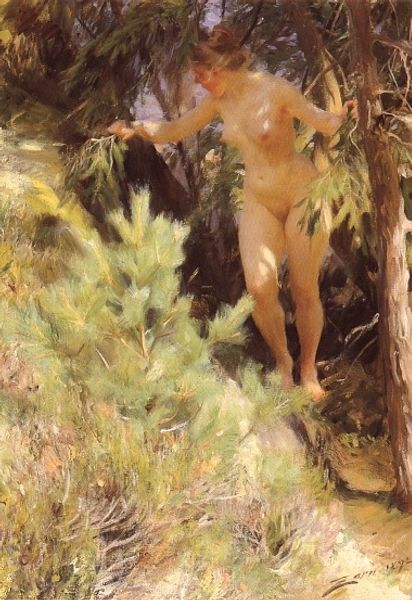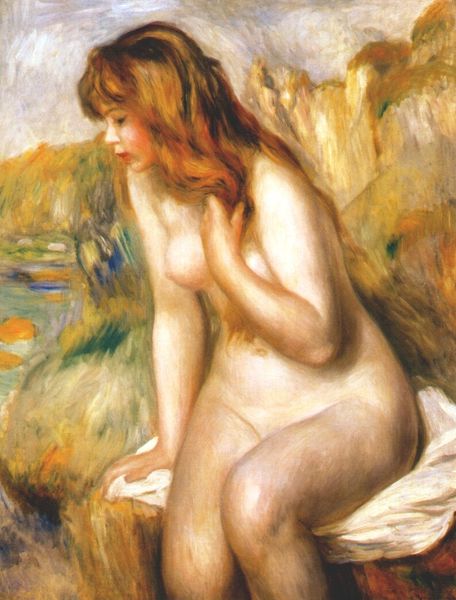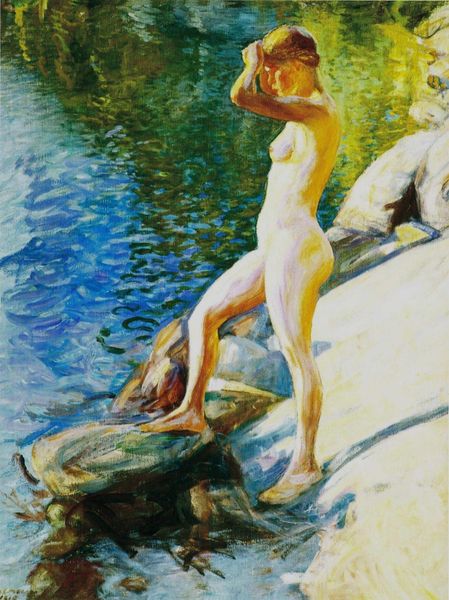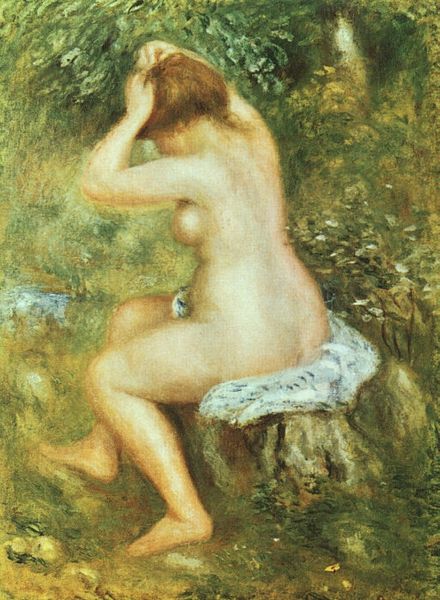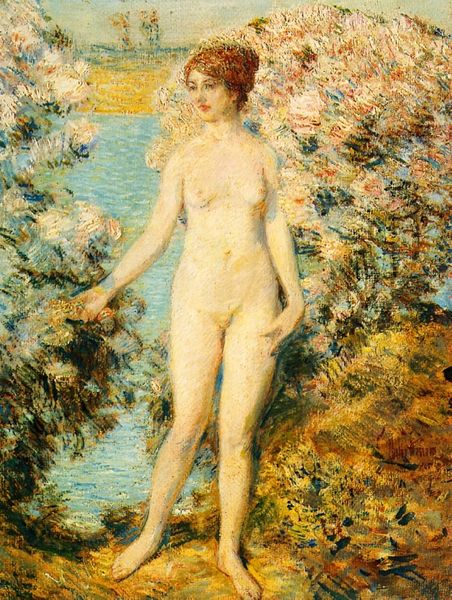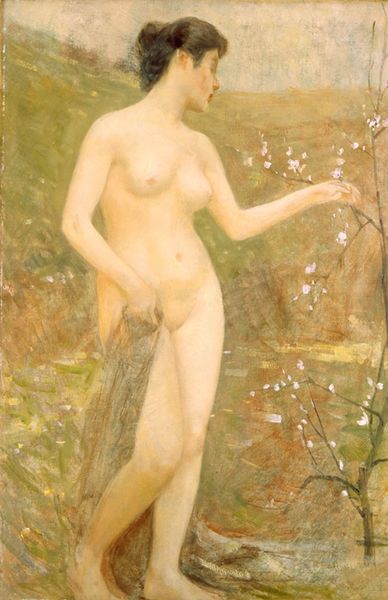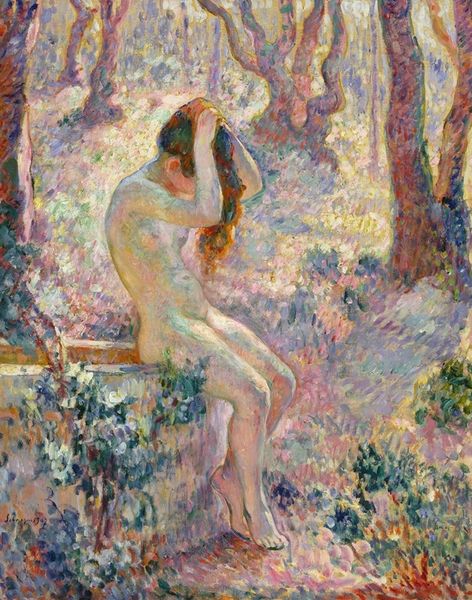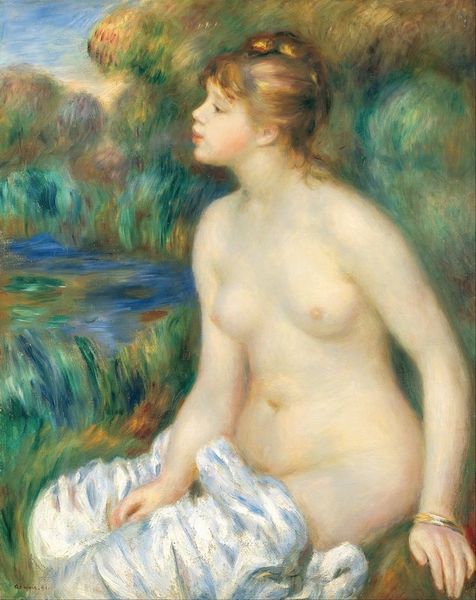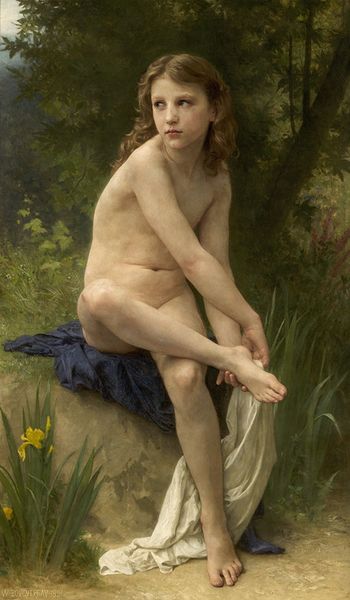
painting, oil-paint
#
painting
#
impressionism
#
oil-paint
#
landscape
#
impressionist landscape
#
oil painting
#
romanticism
#
genre-painting
#
nude
Copyright: Public domain
Curator: Robert Lewis Reid painted "The Bather" in oil. It exemplifies Impressionist landscape painting, and could be seen in connection to romanticism, as well. Editor: There's a lightness to it, a sunny ease. The brushstrokes are loose, almost breezy, especially in the background. What draws you to it? Curator: For me, it is about timelessness. Bathing or immersion rituals carry deep psychological resonance across cultures. This isn't just a pretty nude, it echoes classical ideas of purity, rebirth, or simply shedding burdens, which all tie into how societies and individuals process catharsis. Editor: Interesting that you connect this oil on canvas to timelessness, as to me, the heavy impasto grounds it very much in a material reality. I imagine Reid, in his studio, loading his brush, the smell of the linseed oil… it makes me wonder about the specific pigments used and how accessible they would have been at the time. Curator: It also invites questions about the male gaze. Even with those broken, shimmering brushstrokes typical of Impressionism, the artist directs our eyes in a specific way. Editor: Absolutely, that gaze has very material consequences. Consider how female nudes were commodified and consumed. What was Reid thinking about while capturing the figure with paint, and what does the ownership history of this work suggest about its circulation within the art market? Also, the title – is this simply *a bather*, or *the bather* to represent a certain ideal, what's that signify? Curator: Right, Reid and his work reflect broader trends of idealizing the female form and representing leisure during his era. There’s also the connection with the water element that has symbolic connections with dreams, death, and transformation, but could we consider how materials enable and constrain expression, shaping not only the aesthetics but the cultural messaging too? Editor: A useful reminder that how a work looks often conceals intricate layers of production and consumption that reflect social conditions. This one may have layers that need even more discovery... Curator: Indeed. Symbolism can be fluid, evolving across centuries, like light shimmering on the water’s surface, or even more tangible like the materiality that constructs layers of historical perception that transform meanings for us all over time.
Comments
No comments
Be the first to comment and join the conversation on the ultimate creative platform.


